As initially discussed previously in section 1.5 of the quality assurance report, all Northwest teacher, leader, and counselor candidates upon completion are able to create and develop positive learning and work environments. They have a deep understanding of curriculum implementation, as well as the connections between student learning and the physical spaces in which students learn as well as strategies for designing and using classroom and school environments that foster learning and develop critical thinking in their students. This section expands upon those earlier findings with First-Year Teacher Survey (FYTS) data and demonstrates that candidates have the capacity to adapt these further into a variety of school contexts. It is recommended that if you have not already that you first go back and read section 1.5 of the quality assurance report and then return here before reading through the FYTS data that follows.
The Missouri Department of Secondary and Elementary Education (DESE)has a suite of six surveys educators complete in their first year of employment, which DESE has been collecting since the 2015-16 academic year. The First-Year Teacher Survey (FYTS), taken by teacher, in alignment with MEES Standards #3-5, asks completers two questions to assess their preparation in curriculum implementation (FYTS questions 11-12), three questions to assess the preparation to engage students in critical thinking (FYTS questions 13-15), and seven questions to assess their preparation in creating positive classroom environments (questions 17-23). In addition, the First-Year Teacher Survey by principals (FYTS), taken by principal, which is completed by principals assessing Northwest teachers following their first year on the job, also has similar questions regarding curriculum implementation (questions 10-11), critical thinking, (questions 12-14), and positive classroom environments (questions 16-22).
Across these twelve questions, Northwest teacher candidates performed well when compared to state averages, though there are two notable weaknesses. On question twelve, Northwest teacher candidates did not perceive themselves (at 75%) as “prepared to deliver lessons for diverse learners” as their peers did across the state (at 82%), though their principals did (at 76% to 74%). Another notable perceived weakness came across regarding classroom management, as addressed on FYTS question 19: only 69% of candidates felt well “prepared to manage a variety of discipline issues. This is the area in the FYTS across the entire state where candidates most struggled; only 62% of state-wide teacher candidates felt well prepared for a variety of discipline issues. This corroborates with qualitative student feedback from Northwest candidates as reported in their twelfth week of student teaching: trends in qualitative feedback from spring 2018 and fall 2019 candidates demonstrate concern regarding preparation in handling difficult classroom management situations. While classroom management is challenging for all new teachers, and all educator preparation programs should intently focus on improving this crucial component of high-quality clinical preparation, the Northwest educator preparation program has taken steps to improve candidate performance in classroom management, to be discussed in more detail in the “Conclusion: Findings and Recommendations” section of this report.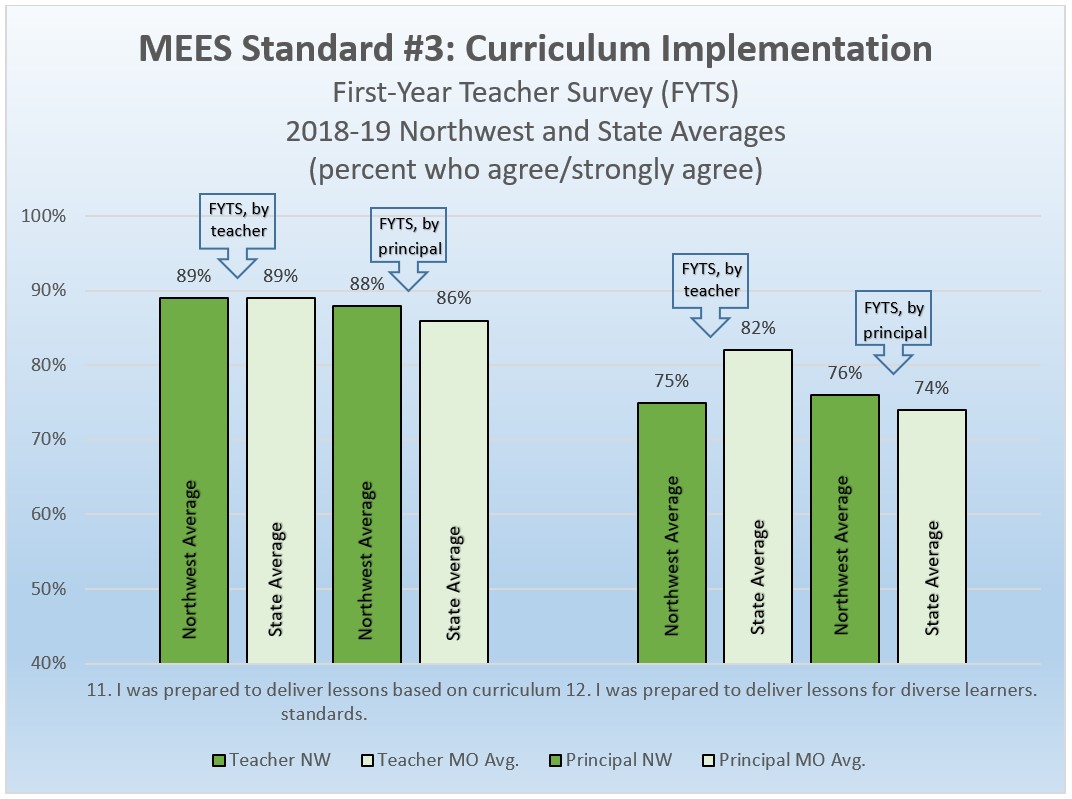
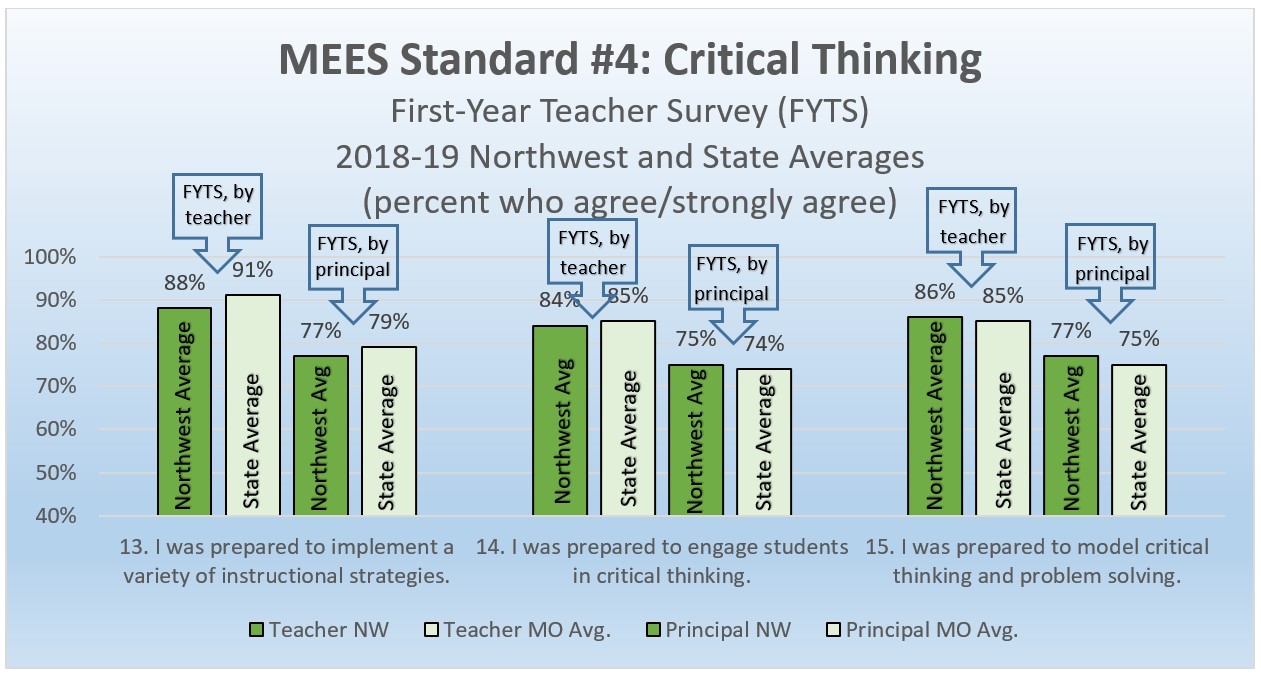
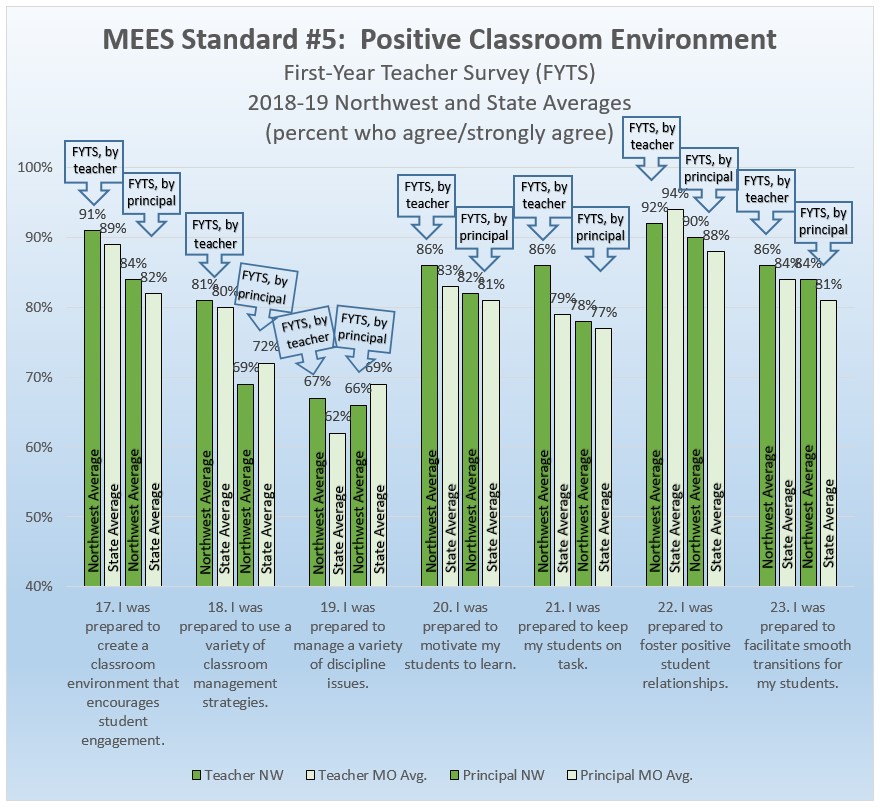
A review of the evidence provided by the state reveals that Northwest candidates are consistently better-prepared, and more effective, than counterparts from other preparation pathways. While there is certainly room for more improvement, this data suggests that the clinical practice, quality feedback, and coaching we provide our candidates is working. In 2021-22, the first completers from the newly redesigned undergraduate programs and their principals will take the FYTS surveys, and Northwest looks forward to comparing their data to these current completers’ data.
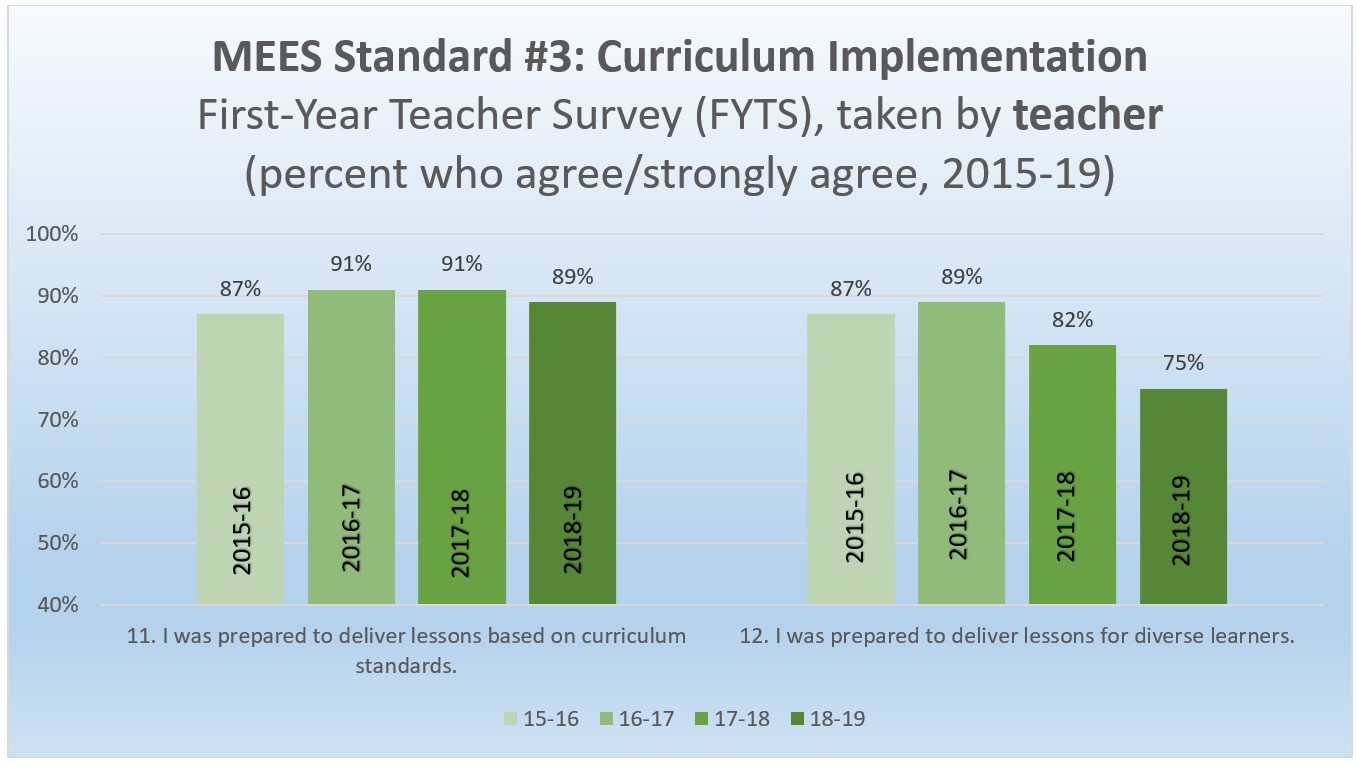
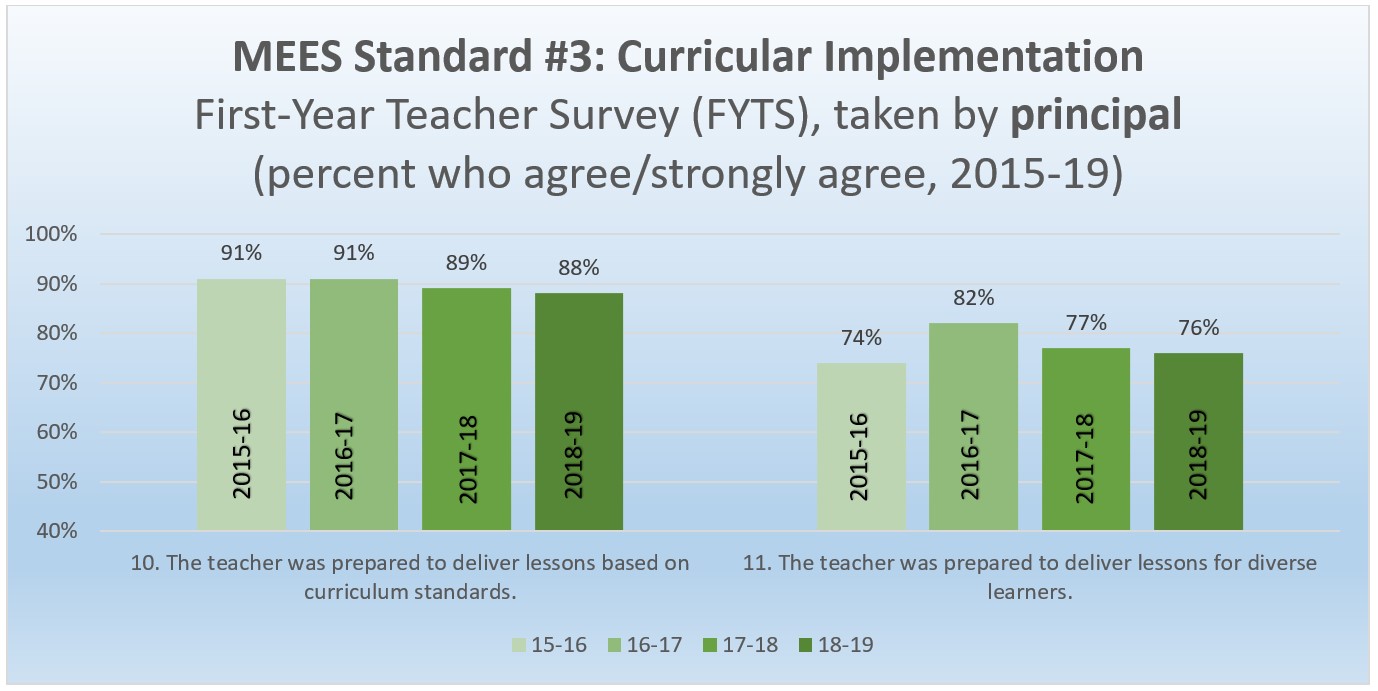
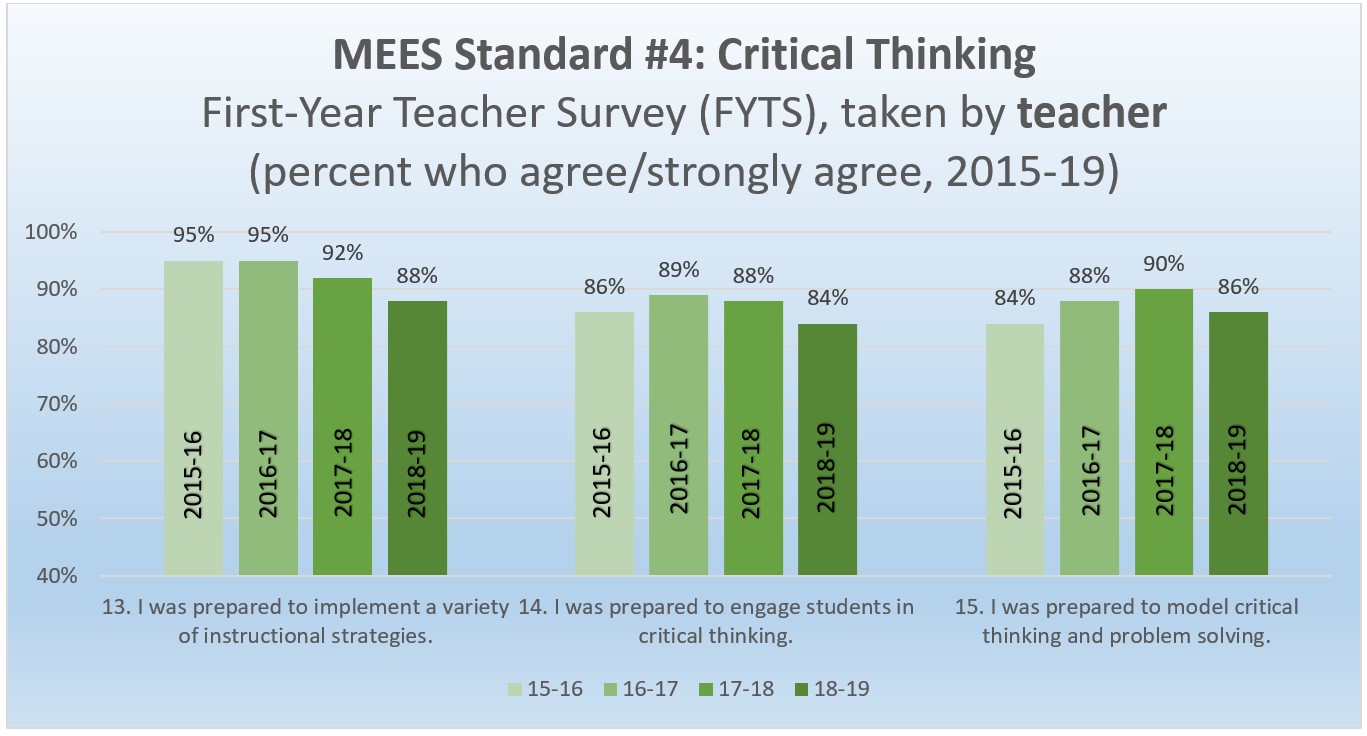
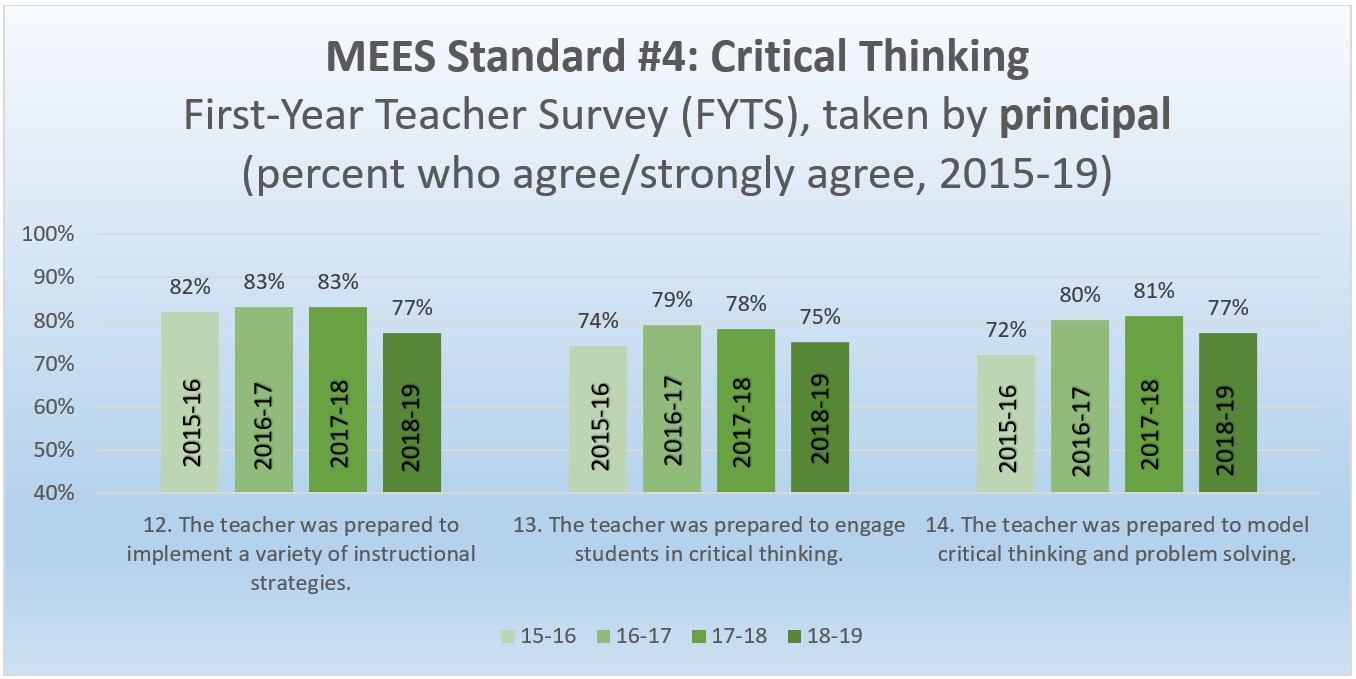
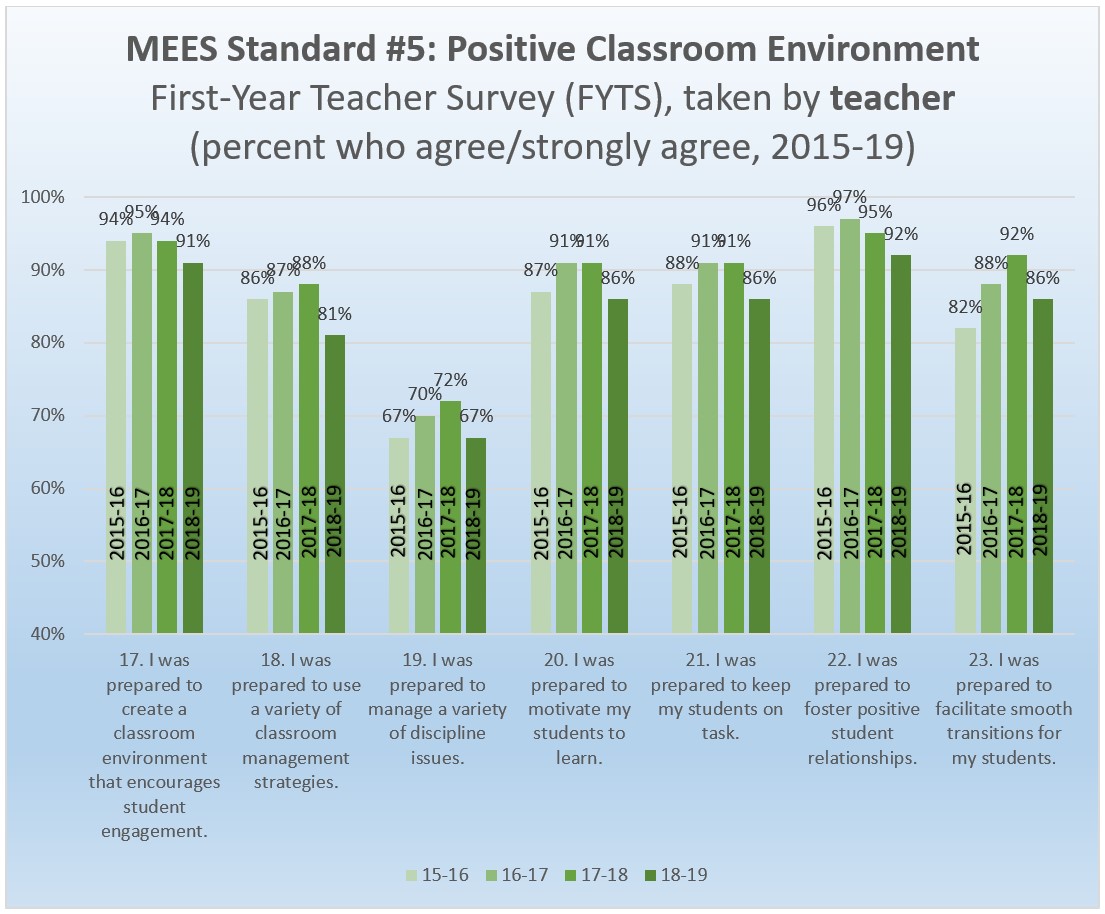
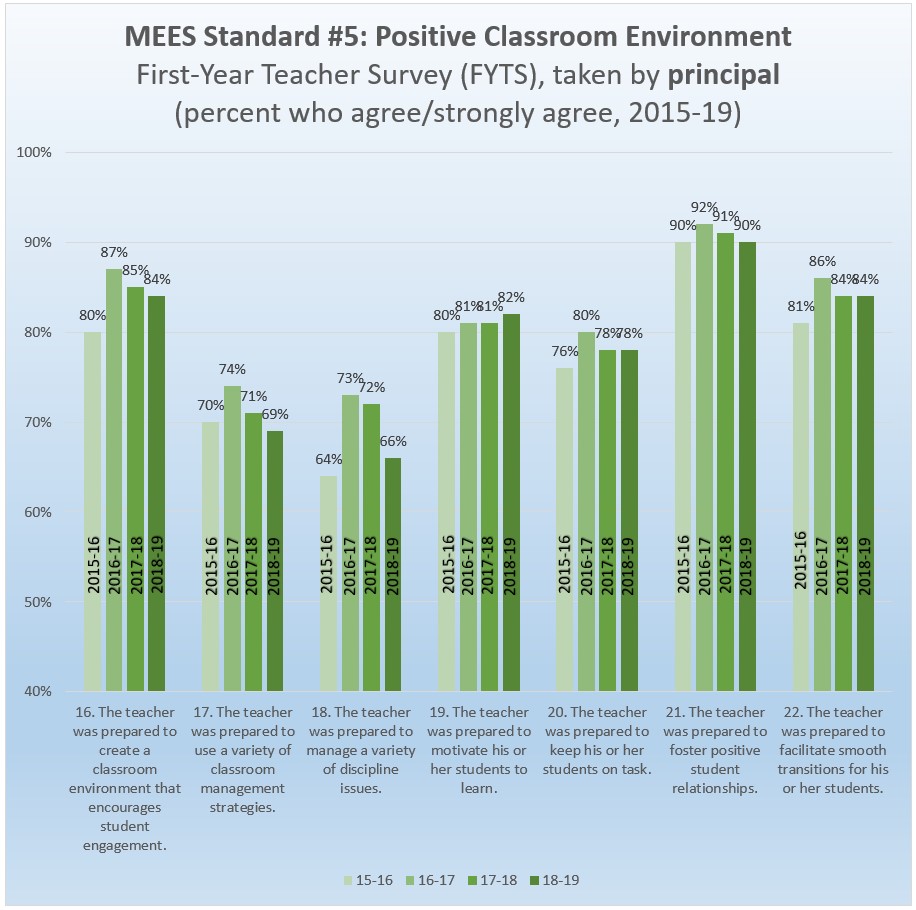
The preceding visuals support the case that Northwest candidates effectively develop relationships, utilize a variety of management styles, and create engaging classrooms. We believe this to be strong evidence of quality curriculum and quality program practices, as the majority of candidates who completed were deemed effective into their professional role, which provides evidence in support of AAQEP standards 2.3 and 4.3.